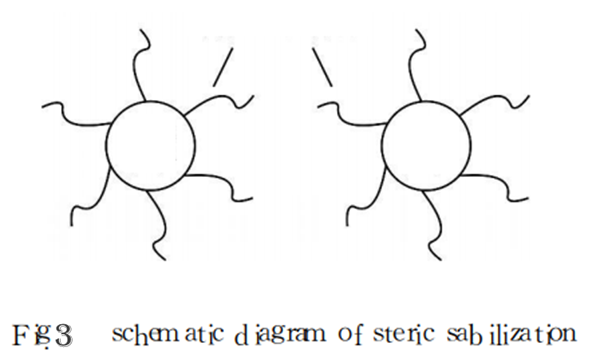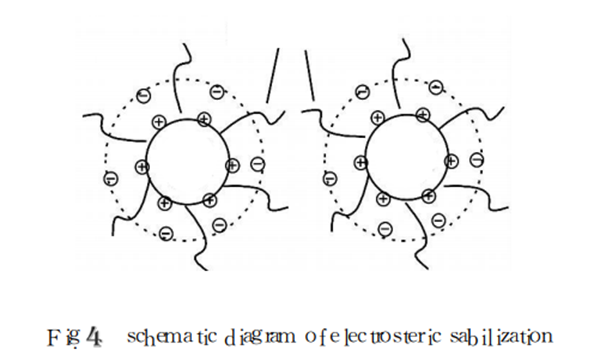- Home
- Products
- Elementary
- Boride Powder
- 3D Printing Powder
- Sulfide Powder
- Oxide Powder
- Carbide powder
- Nitride Powder
- Silicide Powder
- Hydride Powder
- Telluride Powder
- Selenide Powder
- Stearic Acid Series
- Phosphide Powder
- Nanoparticles
- Metal Alloy
- MAX Phase
- Lithium Battery Anode
- Surfactant
- Molecular sieves
- Concrete Admixtures
- News
- Answers
- Contact
- About
How to improve nanoparticles to make them more superior nanomaterials
Load of nanoparticles
The load of nanoparticles can be split right into two kinds: soft load and also hard heap. Soft agglomeration is mainly brought on by the electrostatic pressure in between fragments and also van der Waals force. Because of the weak force, soft pile can pass some chemical methods.
The legislation or the application of mechanical power to eliminate; the formation of difficult load along with electrostatic forces and van der Waals pressures, there are chemical bonds, so difficult agglomerates are challenging to damage, require to take some special methods to regulate.
 < img src="// ueeshop.ly200-cdn. com/u _ file/UPAI/UPAI779
/ 1907/photo/1661a376e4. png"/ > Schematic diagram of pile of nanoparticles Dispersion of nanoparticles Among the methods to stop the formation of high-density, hard-block precipitates of nanoparticles is to reduce van der Waals attraction or communication in between groups, to make sure that the primary bits are not quickly agglomerated to develop additional particles, thus preventing additional inter-atomic bonding. This results in the formation of high-density, hard-blocked precipitates. The anti-agglomeration system of nanoparticles is split right into: (1) electrostatic stablizing (DLVO theory); (2) steric stabilization; (3) electrostatic steric stablizing.
Nanoparticle dispersion concept Electrostatic stablizing device (DLVO theory)
The electrostatic stabilization mechanism, additionally called the electric double layer stablizing system, forms an electrical dual layer by readjusting the pH value to produce a certain amount of surface area charge on the surface of the fragment. The tourist attraction between the particles is considerably minimized by the repulsive force between the electrical dual layers, thus realizing the diffusion of the nanoparticles. The system is shown as displayed in Number 2.
< img src="// ueeshop.ly200-cdn. com/u _ file/UPAI/UPAI779
/ 1907/photo/1661a376e4. png"/ > Schematic diagram of pile of nanoparticles Dispersion of nanoparticles Among the methods to stop the formation of high-density, hard-block precipitates of nanoparticles is to reduce van der Waals attraction or communication in between groups, to make sure that the primary bits are not quickly agglomerated to develop additional particles, thus preventing additional inter-atomic bonding. This results in the formation of high-density, hard-blocked precipitates. The anti-agglomeration system of nanoparticles is split right into: (1) electrostatic stablizing (DLVO theory); (2) steric stabilization; (3) electrostatic steric stablizing.
Nanoparticle dispersion concept Electrostatic stablizing device (DLVO theory)
The electrostatic stabilization mechanism, additionally called the electric double layer stablizing system, forms an electrical dual layer by readjusting the pH value to produce a certain amount of surface area charge on the surface of the fragment. The tourist attraction between the particles is considerably minimized by the repulsive force between the electrical dual layers, thus realizing the diffusion of the nanoparticles. The system is shown as displayed in Number 2.

- < img src="// ueeshop.ly200-cdn. com/u _ file/UPAI/UPAI779/ 1907/photo/38c1a5ba33. png"/ > Stochastic stablizing mechanism The steric stablizing mechanism is to add a specific amount of uncharged polymer substance to the suspension to adsorb it around the nanoparticles to form a microcell state, which causes repulsion between the particles, thus achieving the function of diffusion. The device layout is shown in Figure 4.
- Electrostatic steric stablizing system
The pH worth of the polyelectrolyte makes the most of the dissociation level of the polyelectrolyte, so that the polyelectrolyte on the surface area of the particle gets to the saturated adsorption, and also both with each other function to evenly disperse the nanoparticles. The mechanism layout is displayed in Number 3.
 < img src="// ueeshop.ly200-cdn.
com/u _ file/UPAI/UPAI779/ 1907/photo/ed7d9c96f4. png"/ > Nanoparticle dispersion technique The diffusion of nanoparticles in the medium is usually divided into 3 stages: 1 fluid moistening the strong particles; 2 dispersing the larger aggregates right into smaller fragments by exterior force; 3 stabilizing the dispersed fragments, ensuring that the powder bits are in the fluid The phase remains consistently dispersed for a lengthy duration of time to stop the distributed bits from re-aggregating. According to various dispersion systems, it can be divided right into mechanical activity approach as well as surface area modification technique.
< img src="// ueeshop.ly200-cdn.
com/u _ file/UPAI/UPAI779/ 1907/photo/ed7d9c96f4. png"/ > Nanoparticle dispersion technique The diffusion of nanoparticles in the medium is usually divided into 3 stages: 1 fluid moistening the strong particles; 2 dispersing the larger aggregates right into smaller fragments by exterior force; 3 stabilizing the dispersed fragments, ensuring that the powder bits are in the fluid The phase remains consistently dispersed for a lengthy duration of time to stop the distributed bits from re-aggregating. According to various dispersion systems, it can be divided right into mechanical activity approach as well as surface area modification technique.
- Mechanical activity
- Surface area adjustment
- Surface modification of nanoparticles by not natural materials
- Surface alteration of nanoparticles by raw material
 < img src ="// ueeshop.ly200-cdn.
com/u _ file/UPAI/UPAI779/ 1907/photo/c845513ec8. png"/ > verdict The surface alteration innovation of nanoparticles is an edge technique carefully pertaining to lots of various other disciplines, consisting of colloidal chemistry, natural chemistry, crystallography, nanomaterials, modern-day tool analysis as well as screening. The surface finish modification technology has actually been commonly utilized in the surface area alteration of nanometers, as well as the research results in this location additionally show that the surface area layer technology has a great advancement possibility. Nevertheless, the modification device, alteration technique and equipment, and also the adjustment impact characterization are still not best. Numerous times, the issue can not be addressed basically, and also further research is urgently needed. As a result of the considerable changes in the physical and chemical homes of the surface-treated bits, the growth of nano surface modification technology is taken into consideration a vital methods of generating brand-new materials in the future. With the continual research study and also understanding of nano-particles, and better exploration of the surface area adjustment of nano-powders, nano-technology will definitely apply possible power in different areas and also will certainly create a great society. Advantages and economic advantages.
< img src ="// ueeshop.ly200-cdn.
com/u _ file/UPAI/UPAI779/ 1907/photo/c845513ec8. png"/ > verdict The surface alteration innovation of nanoparticles is an edge technique carefully pertaining to lots of various other disciplines, consisting of colloidal chemistry, natural chemistry, crystallography, nanomaterials, modern-day tool analysis as well as screening. The surface finish modification technology has actually been commonly utilized in the surface area alteration of nanometers, as well as the research results in this location additionally show that the surface area layer technology has a great advancement possibility. Nevertheless, the modification device, alteration technique and equipment, and also the adjustment impact characterization are still not best. Numerous times, the issue can not be addressed basically, and also further research is urgently needed. As a result of the considerable changes in the physical and chemical homes of the surface-treated bits, the growth of nano surface modification technology is taken into consideration a vital methods of generating brand-new materials in the future. With the continual research study and also understanding of nano-particles, and better exploration of the surface area adjustment of nano-powders, nano-technology will definitely apply possible power in different areas and also will certainly create a great society. Advantages and economic advantages.
Luoyang Technology Co., Ltd is a professional Zinc Nanoparticles maker with over 12 years experience in chemical items study as well as advancement. If you are seeking excellent quality Zinc Nanoparticles, please do not hesitate to contact us as well as send out a query.
Inquiry us
PREVIOUS NEWS
The role of redispersible latex powder in mortar
NEXT NEWS
 < img src="// ueeshop.ly200-cdn.
com/u _ file/UPAI/UPAI779/ 1907/photo/ed7d9c96f4. png"/ > Nanoparticle dispersion technique The diffusion of nanoparticles in the medium is usually divided into 3 stages: 1 fluid moistening the strong particles; 2 dispersing the larger aggregates right into smaller fragments by exterior force; 3 stabilizing the dispersed fragments, ensuring that the powder bits are in the fluid The phase remains consistently dispersed for a lengthy duration of time to stop the distributed bits from re-aggregating. According to various dispersion systems, it can be divided right into mechanical activity approach as well as surface area modification technique.
< img src="// ueeshop.ly200-cdn.
com/u _ file/UPAI/UPAI779/ 1907/photo/ed7d9c96f4. png"/ > Nanoparticle dispersion technique The diffusion of nanoparticles in the medium is usually divided into 3 stages: 1 fluid moistening the strong particles; 2 dispersing the larger aggregates right into smaller fragments by exterior force; 3 stabilizing the dispersed fragments, ensuring that the powder bits are in the fluid The phase remains consistently dispersed for a lengthy duration of time to stop the distributed bits from re-aggregating. According to various dispersion systems, it can be divided right into mechanical activity approach as well as surface area modification technique.
 < img src ="// ueeshop.ly200-cdn.
com/u _ file/UPAI/UPAI779/ 1907/photo/c845513ec8. png"/ > verdict The surface alteration innovation of nanoparticles is an edge technique carefully pertaining to lots of various other disciplines, consisting of colloidal chemistry, natural chemistry, crystallography, nanomaterials, modern-day tool analysis as well as screening. The surface finish modification technology has actually been commonly utilized in the surface area alteration of nanometers, as well as the research results in this location additionally show that the surface area layer technology has a great advancement possibility. Nevertheless, the modification device, alteration technique and equipment, and also the adjustment impact characterization are still not best. Numerous times, the issue can not be addressed basically, and also further research is urgently needed. As a result of the considerable changes in the physical and chemical homes of the surface-treated bits, the growth of nano surface modification technology is taken into consideration a vital methods of generating brand-new materials in the future. With the continual research study and also understanding of nano-particles, and better exploration of the surface area adjustment of nano-powders, nano-technology will definitely apply possible power in different areas and also will certainly create a great society. Advantages and economic advantages.
< img src ="// ueeshop.ly200-cdn.
com/u _ file/UPAI/UPAI779/ 1907/photo/c845513ec8. png"/ > verdict The surface alteration innovation of nanoparticles is an edge technique carefully pertaining to lots of various other disciplines, consisting of colloidal chemistry, natural chemistry, crystallography, nanomaterials, modern-day tool analysis as well as screening. The surface finish modification technology has actually been commonly utilized in the surface area alteration of nanometers, as well as the research results in this location additionally show that the surface area layer technology has a great advancement possibility. Nevertheless, the modification device, alteration technique and equipment, and also the adjustment impact characterization are still not best. Numerous times, the issue can not be addressed basically, and also further research is urgently needed. As a result of the considerable changes in the physical and chemical homes of the surface-treated bits, the growth of nano surface modification technology is taken into consideration a vital methods of generating brand-new materials in the future. With the continual research study and also understanding of nano-particles, and better exploration of the surface area adjustment of nano-powders, nano-technology will definitely apply possible power in different areas and also will certainly create a great society. Advantages and economic advantages.